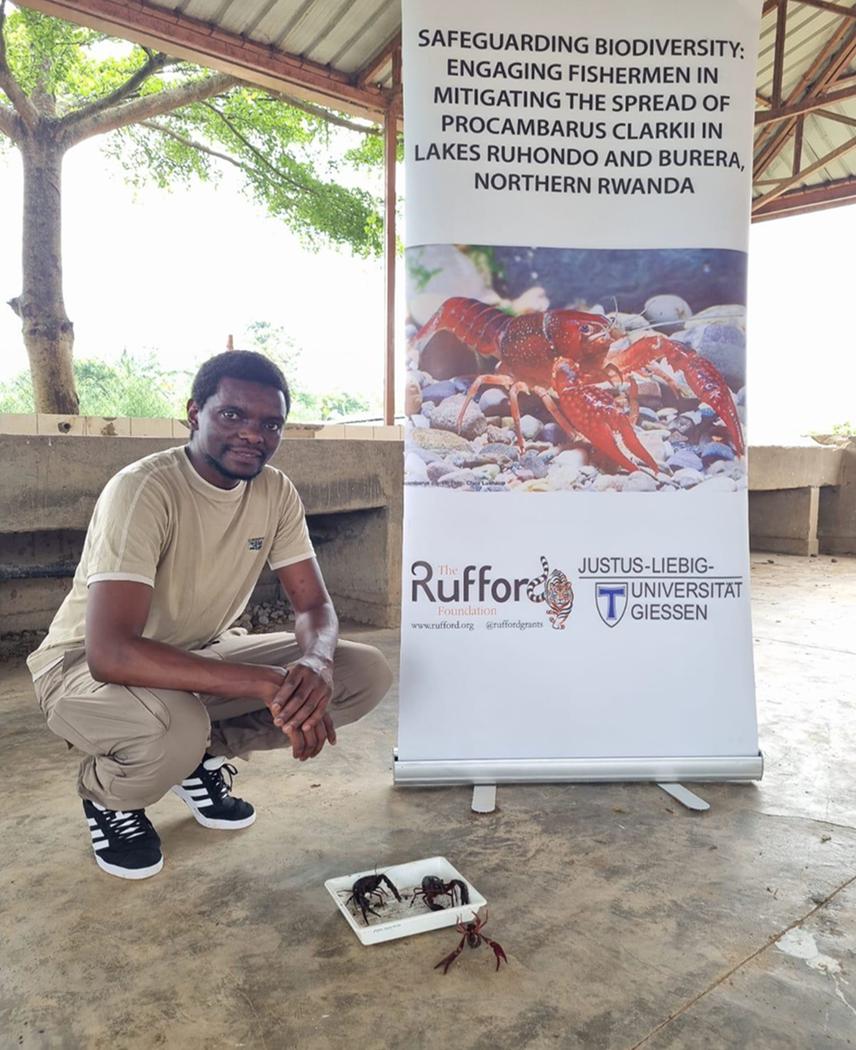Marcellin Rwibutso
This project aims to assess the presence and abundance of the globally invasive red swamp crayfish Procambarus clarkii in Lakes Burera and Ruhondo in northern Rwanda. We will survey sites at various depths in the lakes and in the drainages of these twin lakes where the species has been reported by locals. Based on these data, we hope to develop a strategy to mitigate or prevent negative impacts on native freshwater diversity. Fishermen at these lakes will be educated in a workshop on how to contain the spread of P. clarkii to protect native species.

© Emmanuel Kwizera.
Invasive alien species studies have major implications for conserving the biodiversity of other freshwaters by providing strategies for containing the spread of these species and making decisions to protect higher freshwater flora and fauna. In the north-eastern Rwanda watershed, aquatic biodiversity is highly threatened by habitat loss and ongoing degradation from development activities such as urban expansion, infrastructure development, pollution, and agriculture, as well as invasion and spread of P. clarkii, which threatens native species. Alien species may emerge as new predators, competitors, and parasites, and may transmit diseases. They may also interbreed with native species. The project will clarify the potential threat of invasive species in streams and rivers, habitats that have received far less attention than the larger lakes in the region. The study will also document freshwater fauna sampled in the drainages of Lakes Burera and Ruhondo to determine their conservation status.
This project will assess and document the composition and species diversity in the headwaters of the northern watershed, as well as habitat conditions and changes at different time scales. Protection of freshwater resources will undoubtedly maintain the wide range of natural species diversity by identifying the spread of P. clarkii as an invasive alien species that poses a threat to freshwater biodiversity. Freshwater has always been home to diverse life forms, and biodiversity species play an important role in aquatic and terrestrial ecosystems by playing a dynamic role in nature's nutrient and food web. Identifying the distribution of P. clarkii for further control strategies and determining degradation caused by anthropogenic activities will provide fundamental data for conservation. The project will also provide planners with insights into the ecological status of freshwater and build capacity for freshwater conservation and management at the local and national levels through on-the-ground conservation education programmes.
Header: Invasive red swamp crayfish (Procambarus clarkii) from Ruhondo Lake. © Marcellin Rwibutso.